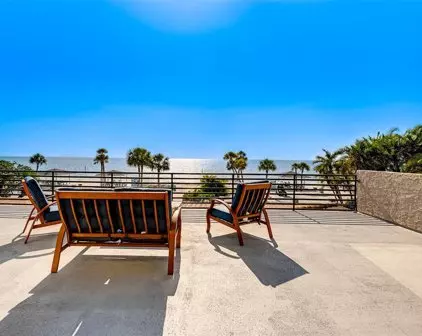
Best Neighborhoods in St. Petersburg for Singles & Young Professionals
Thinking of moving to St. Petersburg? The Sunshine City has plenty to offer, including vibrant art districts, waterfront recreation, and amazing museums—not to mention it’s one of the best cities for job seekers. Take a look at the five best neighborhoods in St. Pete for singles and young professionals! Crescent Lake Home Price: $470,000 median purchase price; $2,412 median monthly rent Crime Rate: Safer than 21% of Florida cities Named after Crescent Lake Park in Central St. Pete, Crescent Lake is a great neighborhood for young professionals who want to live in a more residential area near downtown. While excitement isn’t far away, Crescent Lake is one of the quieter neighborhoods in the area, making it a desirable home for young families working on the east side of the city. The calm streets are lined with Cape Cod and Craftsman-style homes, while businesses and restaurants can be found around the border of this St. Petersburg neighborhood. Need to go downtown? Crescent Lake is just a five-minute drive away! Things to Do in Crescent Lake Play some tennis at the Huggins Stengel Sports Complex, or take the dogs to the dog park on the south side of Crescent Lake Park. Visit the oldest living museum in St. Petersburg and stroll through pathways lined with indigenous tropical plants at the Sunken Gardens. Join in on the fun with the group fitness programs at F45. Check out contemporary creations from international artists at ARTicles gallery. Sit down for a Bistro Burger, Potato Crusted Snapper, or Duck Confit at The Left Bank Bistro. Get sushi in St. Petersburg at Hook’s, and be sure to try the Crispy Rice and X-Plosion Nigiri. Stop for brunch at Three Birds Tavern, where you can order Brunch Sliders or a Twisted Benedict paired with a Bloody Mary. Spend the night competing in a billiards tournament and enjoy some of your favorite drinks at The Flamingo Sports Bar. Historic Kenwood Home Price: $397,450 median purchase price; $1,707 median monthly rent Crime Rate: Safer than 21% of Florida cities Named the National Neighborhood of the Year, Historic Kenwood located in the middle of St. Pete is a neighborhood anyone would be proud to call home. As one of the most historic neighborhoods in the region, it boasts well-kept bungalows and other home styles outlined by brick streets. There are also plenty of desirable rental options—including stylish townhomes and larger apartment complexes—that make Historic Kenwood an amazing place for singles and young professionals to live. This gay-friendly St. Pete neighborhood is also known for its active association with the LGBTQ community and houses the Metro LGBTQ Welcome Center and several gay-owned businesses. Plus, foodies will love the number of great restaurants scattered down 5th Ave and on the outskirts of this safe St. Petersburg neighborhood! Things to Do in Historic Kenwood Test your accuracy, challenge some friends, or even join an axe-throwing league at Hatchet Hangout. Take your furry friend to play and meet other dog owners at Kenwood Dog Park. Check out a variety of colorful glass creations and amazing showcases for some of the world’s best glass artists at Imagine Museum. Walk through galleries of wall art and talk to the local artist behind the creations at St. Pete ArtWorks. Start your day with a delicious pastry like a Twisty, Apple Fritter, or E-Clair from Fray’s Donut House. Feast on some great BBQ plates like Slow Smoked Pulled Pork while enjoying craft alcohol creations like a Bourbon Sidecar at Urban Brew & BBQ. Grab some Mexican food in St. Petersburg at Casita Taqueria, where you can order homemade Flautas or Carnitas Tacos. Hang out with your pup and other dog lovers while enjoying some drinks at The Dog Bar. Historic Uptown Home Price: $380,000 median purchase price; $2,042 median monthly rent Crime Rate: Safer than 21% of Florida cities Want to live in an affordable neighborhood near the beach? Check out Historic Uptown! While some of the century-old homes put the “historic” in Historic Uptown, colorful houses share leafy streets with new-construction homes and small apartment buildings, providing a mix of housing options. Active residents will enjoy taking part in the St. Anthony’s Triathlon, and particularly appreciate that the beach at North Shore Park is only five minutes away! And, despite Historic Uptown being so close to Downtown St. Petersburg, this neighborhood provides a true community feel, thanks to friendly neighbors and an active neighborhood association, which puts on popular community events like the Historic Uptown Mardi Gras Block Party. Things to Do in Historic Uptown Unwind with a walk around the circular lake or relax in the gazebo at Historic Round Lake Park. Stretch out during one of the several yoga classes at Sun State Yoga. Sign up for cross-fit training programs and work with a nutritionist at Burg Crossfit. Check out one of the oldest antiquarian bookstores in the United States at Wilson’s Book World. Get your day started right with a Frittata Of The Day or a Scone & Gravy at Uptown Eats. Try a Bison Bacon Burger or Chicken on a stick paired with a local brew at The Bier Boutique. Take a tour of Flying Boat Brewing Co. and sit down for a glass of the Crescent Lake Pilsner, St. Pete Sunset, or Surfside Blonde. Stop by one of the best seafood restaurants in St. Petersburg, the 4th Street Shrimp Store, and be sure to order the Cod Sandwich, Shrimp Po’Boy, or Fried Oysters. Old Southeast Home Price: $432,000 median purchase price; $2,156 median monthly rent Crime Rate: Safer than 21% of Florida cities A great St. Pete neighborhood for those who love being outdoors, Old Southeast is a lesser-known gem right off the shore of Tampa Bay. Quiet streets are lined with single and multi-family homes to own or to rent. Beach lovers will enjoy having easy access to the beach via Lassing Park on the eastern side of the neighborhood. The University of South Florida St. Petersburg can be found to the north across the Bayboro Harbor, making this St. Petersburg neighborhood ideal for students and university faculty who want to live close to campus. Just be sure you don’t take Thrill Hill too quickly on your way in and out of Old Southeast! Things to Do in Old Southeast Stroll down the beach, bait some fish, or fly a kite in the 14.2 acres of green space at Lassing Park. Watch a film screening, see a performance, or look at local artwork in The Studio @ 620. Head over to Bartlett Park and shoot some hoops, enroll in tennis lessons, or join a league at the St. Petersburg Tennis Center. Satisfy your green thumb by growing your own produce at the Old Southeast Community Garden. Check out performances from budding local musicians while enjoying food and drinks at The Chattaway. Try a Poke Bowl, Sushi Burrito, or a Jim’s Banh Mi Sandwich at The Old Southeast Market. Sink your teeth into some Cajun crab, shrimp, and conch dishes at Mini Restaurant. Or get other seafood creations like The Big Catch, Gulf Tacos, or Seafood Chowder at The Big Catch. University Park-South Downtown Home Price: $928,000 median purchase price; $2,539 median monthly rent Crime Rate: Safer than 21% of Florida cities Perhaps the most exciting area in the city, University Park-South Downtown is one of the best neighborhoods in St. Petersburg for singles and young professionals. Home to the coolest block in St. Pete and both the Central Arts District and Waterfront Arts District, it’s not hard to find something to do! Streets are filled with colorful galleries, museums, restaurants, and stores—and broken up by a few attractive apartment buildings, condos to rent or buy, and houses. If that isn’t enough to attract you to University Park-South Downtown, Albert Whitted Airport, professional sports venues, The Mall at Sundial, the University of South Florida St. Petersburg, and Tampa Bay are all within walking distance! Things to Do in University Park-South Downtown Take in one of many world-class shows like One Night of Queen or Cinderella at Duke Energy Center For The Arts – Mahaffey Theater. Check out Native American and American West art exhibits at The James Museum. Catch a Tampa Bay Rowdies (USL) game at Al Lang Stadium. Run out the clock and get lost in surrealism at The Dali Museum. Stroll by the water or take a boat onto the bay at Demens Landing Park. Walk through the park or check out a live performance at Williams Park. Try some new and experimental wine blends while snacking on some charcuterie and Neapolitan Style Pizza at TRY WINE Bar & Retail Tasting Lab. Head over to The Mill for a Brunchwich, Kimmelweck Beef Sammy, or Squid Ink Risotto. Grab a slice of the Chicken Bacon Ranch or Lasagna Pizza at Top Slice Pizzeria. Spend the evening socializing, catch the big soccer match, or sit down for Happy Hour at MacDinton’s Irish Pub & Restaurant. Video By: Extra Space Storage Article By: Extra Space Storage Other St Petersburg Communities inlcude: Winton Park Bahama Shores Coquina Key Historic Roser Park
How renting in Tampa Bay went from cheap to expensive, in 11 charts
Florida’s reputation as “the paradise of earth” for the working and middle classes doesn’t apply anymore. So long as they’ve been peddling swampland to northerners, Florida has sold itself on the promise of cheap living. “To the wealthy planter, Florida is eminently inviting,” a delegate for a pre-statehood Florida wrote to a Washington, D.C., newspaper in the early 1840s, as the government attempted to draw new residents with free land. “But to the poor and the moderate in circumstance, it is, beyond comparison, the paradise of earth.” Ever since, Florida’s reputation as the everyman’s Eden has defined it: Come for Mickey. Stay for the endless sunsets. Florida symbolized the dream of an affordable America, a place where you could retire comfortably on a teacher’s pension. Or if you were still working, you might not get rich in one of the abundant service jobs, but you could still afford that cute little apartment with a balcony. Not anymore. Across America, the price of everything has shot up over the past few years. And in Florida, rent, the biggest bill for most, has shot up even more. It was already moving in that direction around Tampa Bay in the past decade. In the last two years, it has skyrocketed, consuming an ever-expanding share of expenses for those on fixed incomes and or in lower-wage jobs. The numbers tell the story. What happened to rent? More than 20 years ago, the promise of an affordable paradise grabbed LaFaye Bodden and pulled her in. A New York City paralegal, she had come to Temple Terrace to visit a friend. “I was sick of the cold,” she said. “I came here one week, and I said, this is it.” She went back to New York and spent the week on the phone, interviewing for jobs. She knew she’d take a pay cut by moving, but soon she was in a 3-bedroom apartment she could easily afford. Bodden moved into her current apartment, in Temple Terrace, in 2010, paying about $850 for two beds and two baths. Before the pandemic, it went up to about $950. Then $1,135, and $1,335. Recently she got notice that if she wants to stay, she’ll have to pay $1,600 a month, plus fees and the water bill. Her experience is not unusual. It’s not that rental rates in Tampa Bay were totally stagnant before the recent spike. Based on statistics going back to 2000 from the real estate data tracking firm CoStar, there were steady increases in rent across the region for most of the early part of this century. That included a bump coinciding with the housing bubble’s inflation in the mid-2000s and a decrease following the subsequent crash. Only in the past decade did average rents consistently surpass $1,000. But one sign of Tampa Bay’s changing costs began around 2014, when rent increases started outpacing inflation. Even then, Tampa Bay maintained its reputation for affordability. From 2000 to 2017, the average rent here was consistently between $125 and $150 cheaper than the national average. Even amid the housing crash, it was still about $100 cheaper to rent here than the national average. Starting around 2014, though, the gap between average local rent and average national rent began to close. And in the spring of 2021, the average asking rent in Tampa Bay surpassed the national average for the first time. “Fair market,” higher wages A longer view of how rents have changed over time — and how substantial that change has been in the past decade — comes via fair-market rent. The U.S. Department of Housing and Urban Development sets that rate every year for units of different size in metro areas across the country. It’s typically set at a rate a little cheaper than the area’s median rent. Local housing authorities use those rates to determine how much money they’ll contribute toward Section 8 Housing Choice Voucher recipients’ rent payments. Fair market rents fluctuate by ZIP code within the Tampa Bay region. But the Department of Housing and Urban Development also announces metro-level fair-market rents, which we’ll use here to get a view of Tampa Bay as a whole. It’s also worth noting that not everyone who qualifies for Section 8 assistance is getting it: Last year, the Tampa Housing Authority opened applications for a lottery that would allow 3,000 households to get on the waiting list for vouchers. In the one week that it accepted applications, 18,000 people applied. You may have heard that a household shouldn’t spend more than 30% of its pre-tax income on rent, a rule of thumb derived from Section 8 standards. Whether that suggestion applies to you depends on many factors — where you live, what you do, how much debt you have. Still, the Department of Housing and Urban Development has long used 30% as the threshold for whether a household is rent-burdened, or paying more in rent than it can afford and still pay for other necessities, like food and transportation. Here’s the hourly wage a single earner in Tampa Bay would need to make, in a 40-hour week, to spend 30% of their income on a unit at the fair-market rate. A year ago, keeping Tampa livable for renters was at the top of Garrett Camfferman’s mind. He helped launch the Tampa Tenants Union amid an effort to organize his neighbors to lobby for renovations and better communication with their landlords. Camfferman, 22, worked a series of low-wage jobs: one at a local smoothie shop, another at Amazon’s fulfillment center in Ruskin, 45 minutes from his apartment, and eventually a $12-an-hour substitute teaching gig. When his lease was up in early 2022, he said, he and his roommate faced a rent hike they couldn’t afford. Camfferman moved back in with his parents in Pinellas County. “I would’ve loved to continue living in Tampa, because I love the city, and I loved many people, my neighbors especially,” he said. “It just wasn’t feasible to continue living there. I had to beg my parents for money on multiple occasions just to pay rent.” Earlier this year, Camfferman realized he couldn’t live with his parents forever, and he couldn’t afford anything in the Tampa Bay area. Now he lives in Carrboro, North Carolina. He hopes to start taking classes at nearby North Carolina State University early next year. In the meantime, his job at Starbucks is enough to cover the rent. Minimum wage and Social Security Section 8 vouchers and other affordable-housing programs aside, rental costs have been burdensome for Tampa Bay’s lowest-wage earners for a long time. But over the past four decades, the number of hours a minimum-wage employee would need to work in a week to afford a fair-market unit has increased substantially. That’s true despite increases in Florida’s minimum wage, including voters’ approval of a 2020 amendment that will set minimum wage at $15 by 2026. For older residents who rely on Social Security income, rental rates were high even in the 1980s. Now, though, a single person’s monthly Social Security check won’t even cover a studio apartment at Tampa Bay’s 2022 fair-market rent, and the picture isn’t much better for couples. Who bears the burden? Who’s most at risk as rents continue to climb? Census data offer a couple of suggestions. The relationship between average rent and median household income by race and gender remained steady during the 2010s. The main takeaway, though, is that rent costs are most burdensome on Black residents — who are more likely to rent, rather than own their homes, compared to households of other races — and on single, childless women, especially those who live alone. Whatever comes next, it seems unlikely that rents will stop increasing anytime soon. CoStar estimated that by the second quarter of 2023, average rent for the region will be $1,863. At about 5% more than 2022′s second-quarter average rent, that would be a much smaller increase than we’ve seen over the past couple of years. The latter half of 2021, for example, showed year-over-year increases approaching 25%. Still, it’s nearly $100 more than landlords were asking for this past June. In early September, the federal government released its Fair Market Rents for 2023. The Tampa Bay-wide fair-market rate for a studio apartment was set at $1,291 — just $56 short of the rate set for a 2-bedroom just a year earlier. One-bedrooms were up to $1,381, 2-beds to $1,659. In dollars, the region’s Fair Market Rent increase was its biggest ever. Bodden, the paralegal enticed long ago by Tampa Bay’s space and sunshine, says she still hasn’t decided whether she’ll stay and spend more on rent, or whether she’ll see if she can find what Florida once offered somewhere else. But it has become clear to her, she said, that the next generations of renters won’t see our region in the same light she did. “Florida will be out of reach to them,” she said. “It won’t be the place where you can go and have this nice life and security and not worry about the cost of living.” Talking about what the past few years have brought, she sounded melancholy. “It was just so sudden.” Article By: Jack Evans
US housing markets are slowing. Is Florida the exception?
Tampa was ranked the ninth-most-overpriced housing market in the country. Housing premiums — the difference between the actual and expected sales price — declined in 27 metro areas from June to July. But every city in Florida saw premiums increase slightly. In Tampa, premiums went up more than 1 percentage point. After two years of near-nonstop growth, housing prices may have finally peaked in some U.S. cities, according to data from Florida Atlantic University. Still, experts predict that Florida’s real estate market will remain strong compared to other parts of the country. Each month, economists Ken H. Johnson from FAU and Eli Beracha from Florida International University compare the expected price of housing with the actual price in the country’s largest metro areas to see which cities are the most overvalued. Tampa ranked ninth overall in July, with the average home selling for 58.5% more than the expected price. Fort Myers came in at No. 3 and Lakeland at No. 7. Housing premiums — the difference between the actual and expected price — declined in 27 metro areas. “This is a sign that places are reaching the top of the cycle and prices are going to start normalizing again now,” said Johnson. Meanwhile, every city in Florida saw premiums increase slightly from June to July. In Tampa, premiums went up more than 1 percentage point. Despite this, Lei Wedge, a professor of finance at the University of South Florida Muma College of Business, said she believes Tampa real estate prices have already peaked. She said statistical models like the one used in the FAU study often lag behind what is actually happening in the market. The median sales price for homes in Tampa, St. Petersburg and Clearwater dropped from $418,000 in June to $415,000 in July, according to data from Greater Tampa Realtors. The number of active listings also increased from 6,573 homes to 8,038. Tampa-based real estate broker Kendall Bonner said she’s seen how rising mortgage rates have helped cool the market over the past several months, making it less competitive. “Buyers have gotten some of their agency back,” she said. Despite this, Johnson said the large influx of buyers moving from out of state will prevent prices from dropping as far as they will in places with stagnant or shrinking populations. According to data from the U.S. Census Bureau, Florida’s population grew by 14.6% from 2010 to 2020, but the number of housing units increased by just 9.7% Though prices may seem out of reach for many Tampa Bay natives, Wedge said homes here are still going for less than in comparable cities like Atlanta or Dallas. There’s also no state income tax, which makes Florida an attractive option for remote workers looking to save money. “Tampa is now on the map in terms of how the country sees us,” Bonner said. “We were once a lesser-known gem, now people are taking notice.” Rather than holding out hope that prices will suddenly return to where they were pre-pandemic, Bonner urged first time homebuyers to explore alternative options like “rent-to-own” programs. Photo By: Martha Asencia-Rhine Article By: Rebecca Liebson
Categories
Recent Posts












